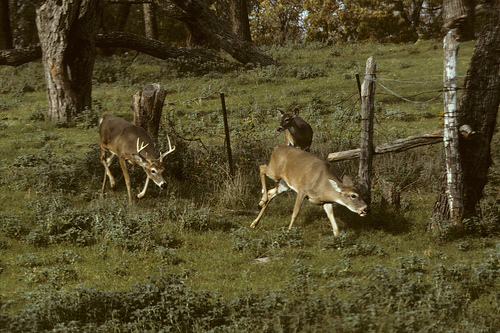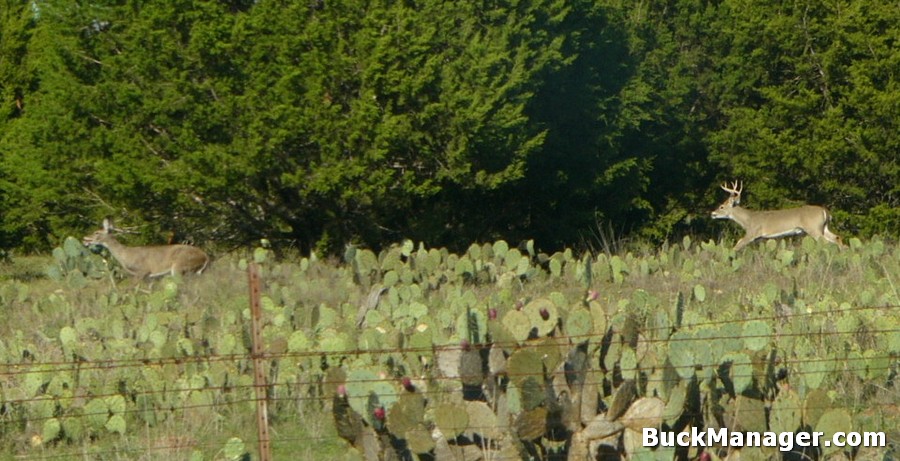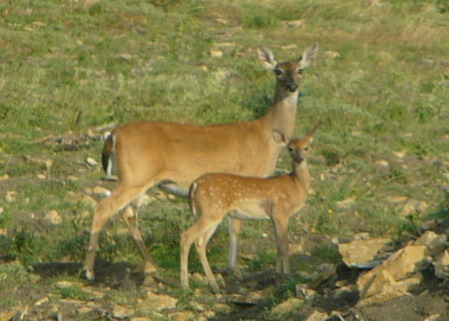If your white-tailed deer hunting grounds lay in North-Central Texas and want to hunt the rut this fall, research on white-tailed deer in this ecoregion has shown conception dates in the Crosstimbers and Prairies were as early as October 13 and extended to at late as December 17.
There are many factors that determine the intensity as well as the length of the rut in an area. Photoperiod (day length) is responsible for the timing, but the buck to doe ratio often determines what hunters see in the field.
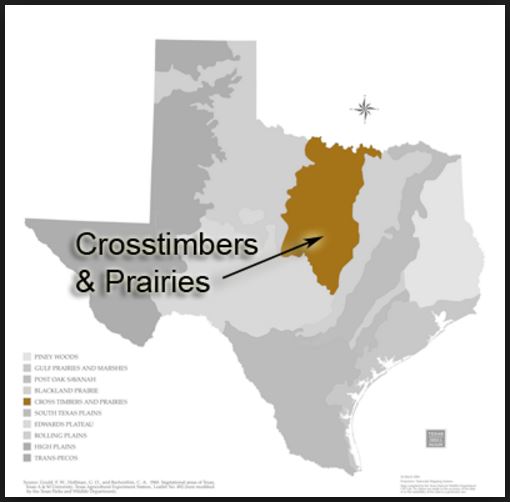
Deer Rutting Season: Things to Consider
Areas, properties with a many more does than bucks tend to observe a breeding period that is stretch out because bucks will miss some does when they initially come into estrus. Then 28 days later, here we go again. This also stretches out the fawning dates, which ultimately lowers fawn survival.
Areas with a lower ratio of does to bucks tend to see more intensive rutting action in whitetail because bucks scramble to cover “hot” does. The rut will be shorter in duration but more intense during that time. As a result, most doe deer will drop fawns earlier and at about the same time, which bodes well for the local deer population.
Rut in the Texas Crosstimbers
Overall, conception dates in the Crosstimbers and Prairies ranged from October 13 to December 17, but there was some variation. Based on timing, mid- to late season bowhunters get the first shot (literally) at rutting bucks in this part of Texas, but whitetails in the region continue breeding almost up until Christmas.
This is good news for deer hunters that enjoy archery hunt and as they can stretch out their hunting days from the early part of the rut in October through the peak of the rut that occurs during Texas’ General Deer Hunting Season.
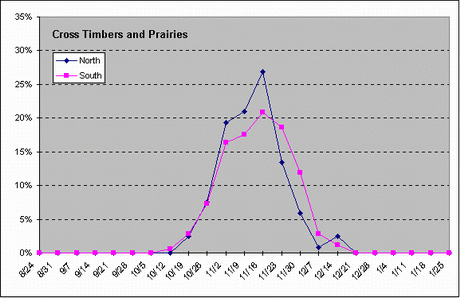
In the northern portion of the region the average breeding date was November 15 and the average breeding date in the southern part was November 17. Biologists recorded an average of 1.7 fetuses per doe and 95 percent of the females had been successfully bred.
Hunting the Rut
Hunters in this region of Texas have the best odds of “hunting the rut” during the two period from about November 11 through November 25. Thinking of taking some time off this hunting season? Now you know when.
The majority (90%) of the fawns in the Crosstimbers are born by June 15 in the northern area and by June 20 in the southern area. In Texas, summer weather can be brutal on white-tailed deer, particularly nursing does and newborn fawns. From their standpoint, the fall whitetail rut can not occur soon enough.
